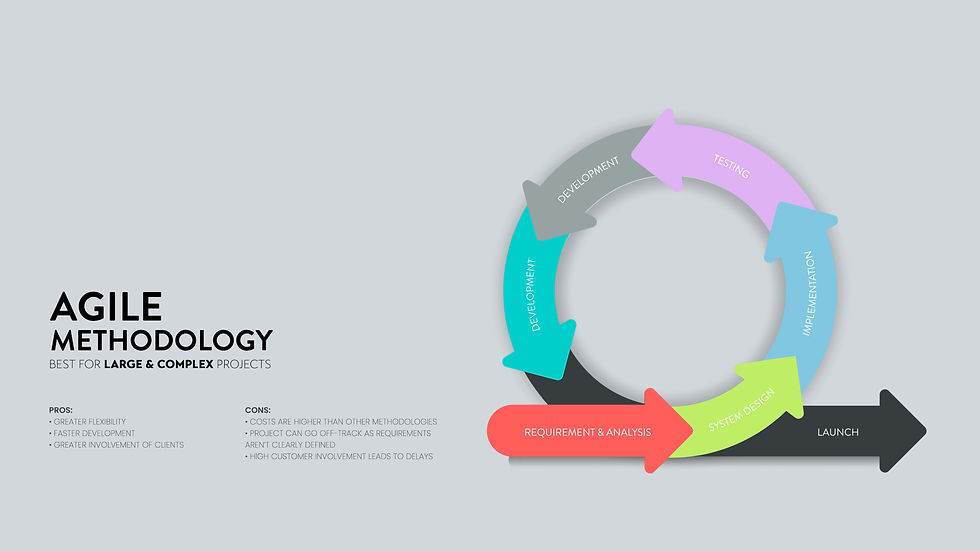Agile vs. Waterfall: Choosing the Right Methodology for Your Program
- Brett Naylor

- Sep 2, 2024
- 2 min read

Introduction: The decision to choose between Agile and Waterfall project management methodologies can significantly influence the trajectory and success of a program rollout. Each methodology offers distinct advantages and is suited for different types of projects. This blog will explore the characteristics, applications, and considerations for selecting Agile or Waterfall, helping you make an informed decision for your next project.

Understanding Agile: Agile is characterized by its iterative and flexible approach, allowing teams to adapt to changes and deliver value incrementally. It is particularly effective in environments where requirements are expected to evolve, such as software development, marketing campaigns, and research projects.
Agile methodologies, such as Scrum and Kanban, emphasize collaboration, continuous improvement, and customer feedback. Teams work in short cycles, known as sprints, to deliver small, functional parts of the project. This allows for rapid adjustments based on stakeholder input and market changes, reducing the risk of delivering a product that doesn't meet user needs.

Understanding Waterfall: Waterfall, in contrast, follows a linear and sequential process, ideal for projects with well-defined stages and stable requirements. It is commonly used in industries such as construction, manufacturing, and engineering, where each phase must be completed before the next begins.
Waterfall's structured approach provides clear documentation, defined roles, and predictable timelines. This makes it easier to manage large teams, allocate resources, and ensure compliance with regulatory standards. However, it also means that changes can be more challenging to implement once the project is underway.
Case Studies: In the tech industry, Agile is often the go-to methodology. For instance, a startup developing a mobile app might use Agile to incorporate user feedback and iterate quickly. This allows the team to refine features, improve user experience, and respond to market demands in real-time.
Conversely, Waterfall is well-suited for industries like construction or manufacturing, where each phase must be meticulously planned and executed. A manufacturing company building a new production line might use Waterfall to ensure that design, procurement, and assembly are carried out in a logical sequence, minimizing disruptions and ensuring quality control.
Key Considerations for Choosing a Methodology:
Project Complexity and Requirements: Consider the complexity and stability of the project requirements. Agile is ideal for projects with evolving requirements, while Waterfall is better suited for projects with fixed specifications.
Team Expertise and Culture: Assess the team's expertise and familiarity with each methodology. Agile requires a culture of collaboration and adaptability, while Waterfall benefits from a structured and disciplined approach.
Stakeholder Involvement: Evaluate the level of stakeholder involvement and feedback required. Agile thrives on continuous stakeholder engagement, while Waterfall provides clear documentation and predefined deliverables.
Timeline and Budget Constraints: Consider the project's timeline and budget constraints. Agile's iterative approach allows for flexibility and cost control, while Waterfall's structured process provides predictability and stability.
Conclusion:

The decision between Agile and Waterfall should be based on the project's nature, complexity, and the team's expertise. By understanding the strengths and limitations of each methodology, project managers can choose the approach that best aligns with their goals, ensuring a successful program rollout.




Comments